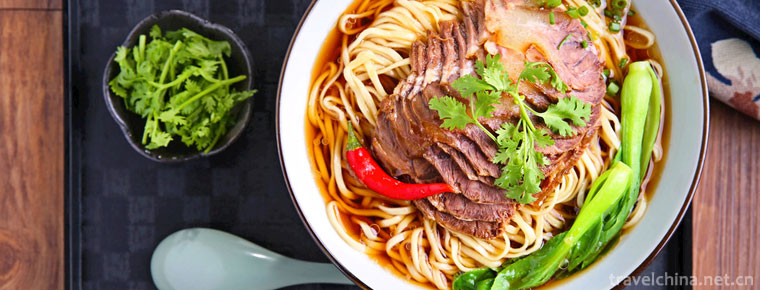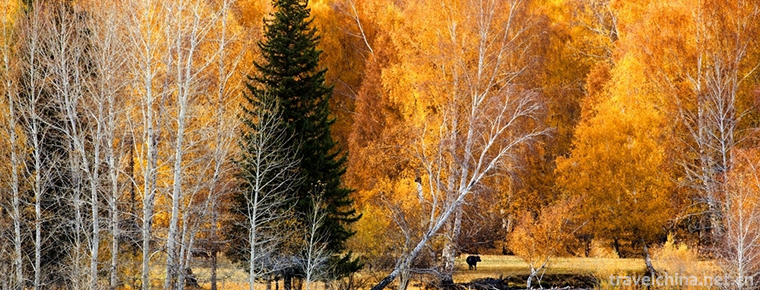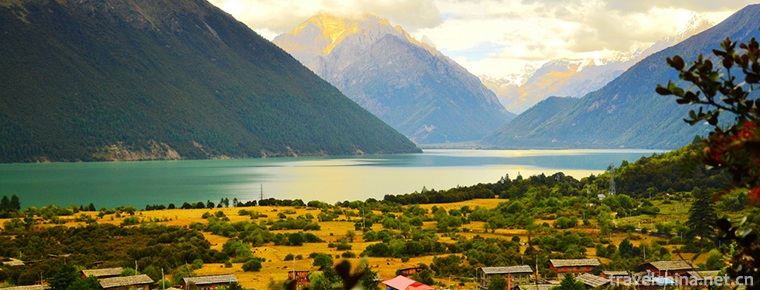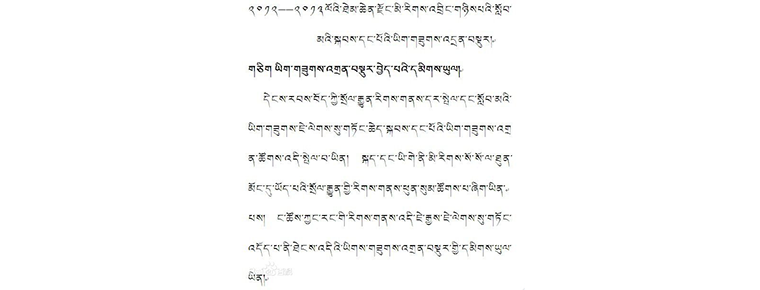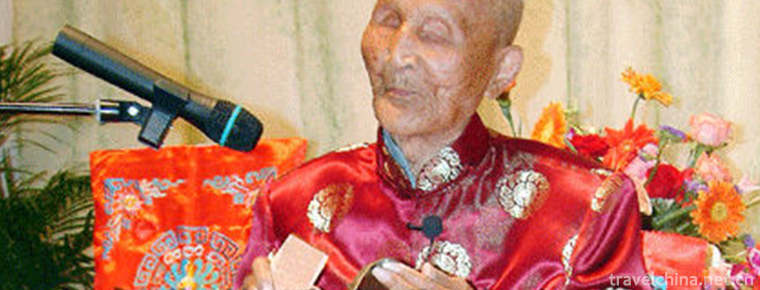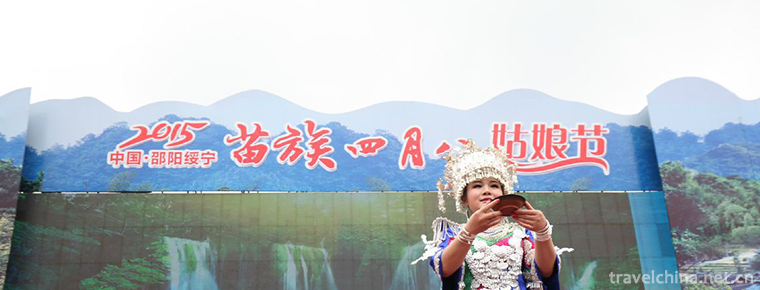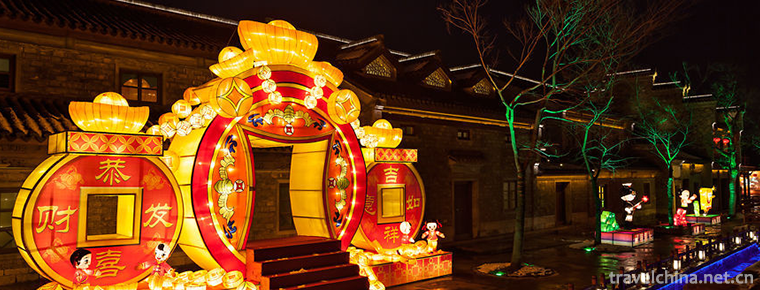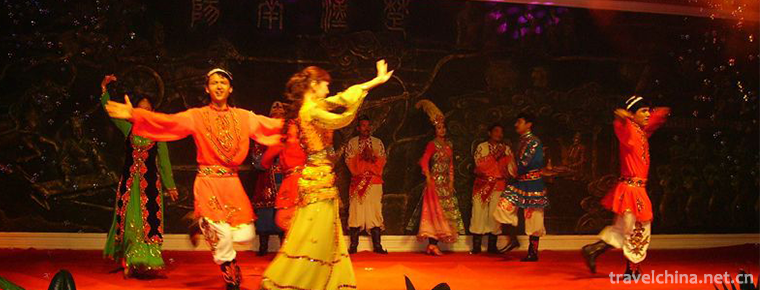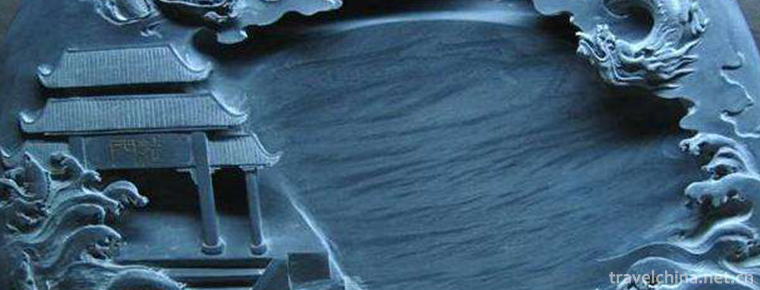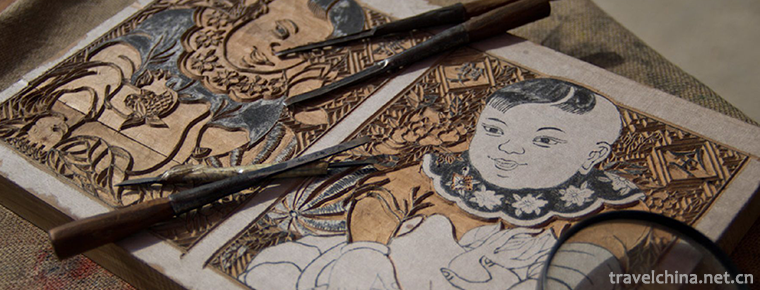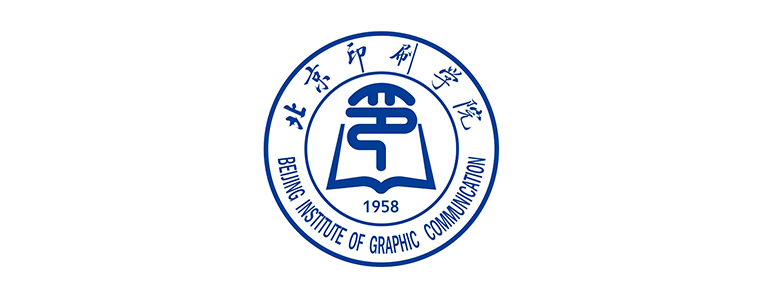Miao Drum and Tibetan Festival
Miao Drum and Tibetan Festival
The Miao Drum-Tibet Festival, a traditional sacrificial festival in Leishan County, Guizhou Province, is one of the national intangible cultural heritage.
Guzang Festival, also known as the Drum Festival, is a ceremony for the Miao tribe to sacrifice the gods of their ancestors, commonly known as "eating drums and hiding". Guzang Festival existed in the Three Miao Kingdoms during the Pre-Qin and Xia Dynasties. The record of Miao people's eating dirty food in Chinese classics dates back to the Qing Dynasty. The Miao Drum-Tibet Festival mainly distributes in nine villages and towns in Leishan County and some Miao villages in Rongjiang County.
On May 20, 2006, Leishan County of Guizhou Province declared that the Miao Drum-Tibet Festival was listed in the first batch of national intangible cultural heritage list with the approval of the State Council. The item number is IX-19.
historical origin
origin
The origin of Guzang Festival is recorded in the Miao classic Ancient Miao Song. It is said that Jiang Yang, the ancestor of mankind, celebrated Guzang Festival in order to sacrifice the butterfly mother who created the world. Legend has it that Mother Butterfly was born from maple trees, so the Miao people worship maple trees. Since the ancestor's home is in the heart of the maple tree, the wooden drum made of the maple tree becomes the resting place of the ancestor, and the sacrificial drum becomes the sacrificial drum. The highest gods of the Miao people are ancestors, maple trees and butterfly mothers. Guzang Festival is a sacrifice to maple tree and mother butterfly.
Legend
Legend I
This ancient ritual of ancestor worship has been recorded in the creation songs of the Miao people, because the Miao people only have language and no words, and the Miao people can sing and dance well, so the song has become the best way to record the Miao people. The lyrics tell us that maple tree is the life tree of all things. After being cut down by Lady Hawthorne in ancient times, the root of the tree becomes loach, the trunk becomes bronze drum, the branch becomes magpie and pigeon, butterflies grow in the heart of the tree, butterflies lay twelve eggs and become the mother of twelve eggs. Mother Butterfly hatched 11 eggs for three years, including Leigong, ghosts, dragons, snakes, tigers, leopards, jackals, Yongye (the earliest man), Niye (the earliest woman), ghosts, gods and beasts. But the remaining egg is still an egg after three years of incubation. Mother Butterfly had to ask the help of the storm, which blew the eggs down the cliff, broke the eggshell and drilled out a calf. The calf resented that Mother Butterfly had not hatched it herself and killed Mother Butterfly. Yongye and Niye farmed with cattle, but they never had a good harvest. The ghost and God told Zhengye and Niye that the cow farmer was not asked to produce good crops because his mother butterfly died of the cow's anger. Only by killing the big drum cattle, can the mother butterfly be worshipped for a bumper harvest. Yongye and Niye sacrificed cattle to worship Mother Butterfly and immediately ushered in a bumper harvest. This is a legend of the origin of "Guzang Festival".
Legend II
There are two sisters in the ancient Miao family. They are beautiful, kind, industrious and intelligent. Their sisters are called "cardia" (Miao language: flowers) and their sisters are called "oops" (Miao language: insects). One day, the two sisters went up to the mountain to cut firewood and were stared at by two tigers. So the tiger turned into two young people and cheated the two sisters into eating in the mountains.
The whole village was in great pain. Their father and brother planned to catch the tiger and chop it to death. At the same time, they closed the gate and killed a drum cow to pay homage to the two sisters who died. After that, they invited people to eat beef and warned everyone not to be deceived again. This is the legend of Guzang Festival.
Development
According to the Miao Ancient Song, the three ancient Miao States existed during the Xia Dynasty of Guzang Festival. The Miao State disintegrated in the war with the Xia Dynasty, and the Miao people still celebrated the Guzang Festival during their migration to the southwest. After Miao people moved to Leigongshan area to settle down, Guzang Festival became more popular.
Records of the Drum-Tibet Festival in the Han literature can be found in the Qianlong Tongzhi of Guizhou in the Qing Dynasty: "Black seedlings are in Duyun, Danjiang, Qingjiang in Zhenyuan, and the ancient Prefecture of Liping.... Every thirteen years, yaks are slaughtered to sacrifice the ancestors of heaven and earth, which is called eating yak dirt."
During the period of the Republic of China, Guzang Festival was still popular. From the early 1950s to the late 1970s, the Guzang Festival was banned and resumed after the 1980s.
Cultural characteristics
Guzang Festival is an ancient ritual of ancestor worship inherited from ancient Miao people. It is also called "Drum Festival", "Drum Society Festival", "Drum Turning Festival" and "Eating Drum Storage". Generally, it is held every 13 years, and only after four consecutive years of ceremonial activities are held, can it be concluded. Its large scale, peculiar form and rich implications are a major feature of Chinese culture.
Drum and Tibet Festival is rich and colorful, including worshiping the gods of heaven and earth, celebrating the harvest, singing and dancing Lusheng dance, and holding traditional sports and entertainment activities. During the festival, priests are usually invited to recite the "Guzang Song" which calls for the gods of heaven, earth and ancestors to celebrate the festival on the second or third day, in order to trace the history of the Miao people from ancient times to their own families, and reeducate the history and culture of all members of the drum club once and again, requiring that the history and culture of the Miao people be kept in mind for generations to come. 。
Major activities
The Drum-Tibetan Festival of the Miao Nationality in the Yangtze River of Leishan Mountains is a religious festival of the Miao Nationality. Miao people live together, and the Miao people in Leishan maintain their survival and development by the "drum club" formed by lineage clans, that is, a clan branch (big family). "Drum" is the symbol of ancestor gods, so the ritual activities of Drum Tibet Festival are carried out with "Drum" as the core. The ceremony of the Drum and Tibet Festival is run by the "Drum and Tibet Head" led by the Drum Society, and the "Drum and Tibet Head" is elected by the masses.
On February 2, the first year of the Guzang Festival, the whole community gathered at the foot of the Maple Spirit Tree in Yinglong Yard. The "Guzangtou" presided over the "Dragon Recruitment" ceremony under the colorful treasure bow. The God tree is covered with paper-cut sun patterns and small paper people. The offerings included a fat pig, 12 bowls of wine, 12 bowls of chicken, duck and fish. The priest dressed in sacrificial clothes first recited the word "Zhaolong" and recited the family history aloud. After reciting the family history, the priest threaded a green-headed duck through its nose and went down to the village along the "dragon vein" on the mountain. The selected group of strong men followed the priest closely, took the colorful triangular banner and small paper man (god of earth) and placed them along the way, playing the Lusheng song of "Dragon Calling" while calling out, "Wake up and wake up the Dragon god, the Drum and Tibet Festival has come, and rise to celebrate with the ancestor god." All the people planted trees on the mountain and then stepped on drums and jumped Sheng in Yinglongchang collectively.
On the first year of July Yin-day, a ceremony of "awakening drum" was held in the Drum Temple on Gushan Mountain. The ceremony was presided over by the "Drum Tibetan Head" wearing Tibetan suits. The participants included priests, village elders and family representatives. The offerings are wine, chicken, duck, fish and glutinous rice. Each offering is divided into 12 parts. The priest first recited the "Suo Ci", read it out, slaughtered a mallard duck, and sprinkled duck blood around the drum. The village elders blew Lusheng, drummed three times with hammers and drums, and then the priests recited the "Awakening Drum Ci" and the "Awakening Drum" troop returned to the "Drum Hall" on the village.
On October 31, the following year, a ceremony was held to welcome drums. The venue, participants and sacrifices of the ceremony were the same as those of awakening drums. After the offerings were placed, the priest recited "Ying Gu Ci". After reading, "Gu Zang Tou" raised his machete to open the way, symbolically welcomed the ancestral spiritual drum back to the village, followed by the drum troop playing Lusheng, returned to the village drum hall, and all the villagers danced "step on the drum" to greet it respectfully.
On the auspicious day of April of the third year, a ceremony of "examining cattle" was held to sing a song of praise to cattle, and to sweep the cattle's whole body with bamao grass, indicating that the evil spirit attached to the cattle had been eliminated. On the ugly September day of the same year, a sacrificial ceremony was held to sacrifice animals and drums. Each yak, dressed up according to custom, was slaughtered for ancestor worship. The festival lasted for 14 days. On the last day, all the villagers gathered at the Drum Temple to hold the ceremony of sacrificing drums.
On the fourth October Ugly Day, a ceremony of killing pigs and sacrificing drums was held, which was called "White Drum Festival". Before daybreak the next day, the "Guzantou" family took the lead in killing pigs, and then each household held a family sacrifice at noon.
Inheritance and Protection
Inheritance value
Drum-Tibet Festival is a traditional sacrificial ceremony of Miao nationality. It is of great scale, complex Festival rituals, long duration, and prominent religious sacred function. It has the research value of religion. In the course of festivals for several years, the Drum and Tibet Festival has continuously re-educated all members of the "Yau Society" in the history and traditional culture of the Miao people, and strengthened the education of the cultural identity of all members of the Miao people, so that all members of the Miao community can be united. The oral history migration song recited in the Drum-Tibet Festival is an oral history of the Miao people and an important basis for studying the history of the Miao people.
The Miao Drum-Tibet Festival has distinct national traditional cultural connotations. It is a manifestation of the Miao people's values of life. Memory of ancestors, respect for the old and love for the young, harmonious coexistence, hard work, frugality, prosperity and well-being are the prayer themes of the Miao Drum-Tibet Festival. The Miao Drum-Tibet Festival is an encyclopedia for studying the history and culture of the Miao nationality, which has important value.
Current situation of inheritance
Due to the development of society and the change of people's ideas, some villagers in Leishan County only take the form of the Drum-Tibet Festival. Most of the villagers in the sacrificial process will not say "Drum-Tibet Hidden Language", and the procedure has been simplified. With the continuous development of modern social economy and the entry of external culture, the cultural and ecological environment of the Miao Drum-Tibet Festival has also been seriously eroded.
protective measures
In order to protect Leishan Miao Drum and Tibet Festival, Leishan County has set up a leading group for the protection of ethnic and folk culture, with an office in the County Sports Radio and Television Bureau, which is specifically responsible for the management, supervision and inspection of daily work. At the same time, Leishan Miao Culture Research Center has been set up. A 10-year protection plan has been formulated for the Miao Drum-Tibet Festival.
On February 2, 2016, Qianhu Miaozhai Museum of Miao Drum Tibetan Culture opened in Qianhu Miaozhai Drum Tibetan Hall in Xijiang, Guizhou Province, which guaranteed the inheritance of Leishan Miao Drum Tibetan Festival culture.
social influence
The Miaonian Culture Week and Miao Drum-Tibet Festival in Leishan, China, was held from November 23 to 29 in Leishan County and Miaozhai Township. Miao people from the United States, Australia, Thailand, Malaysia and Vietnam will share the festival with the Miao people in China.
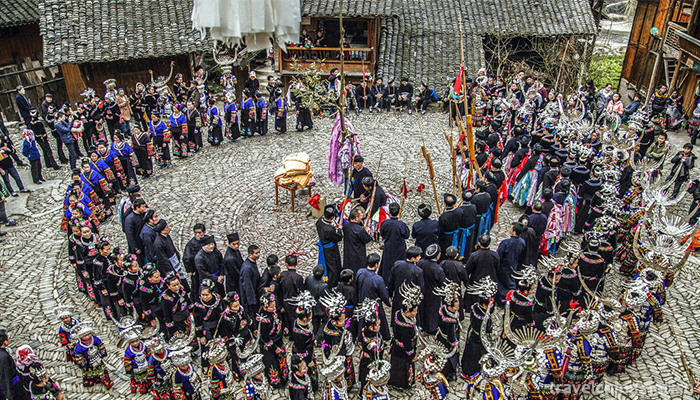
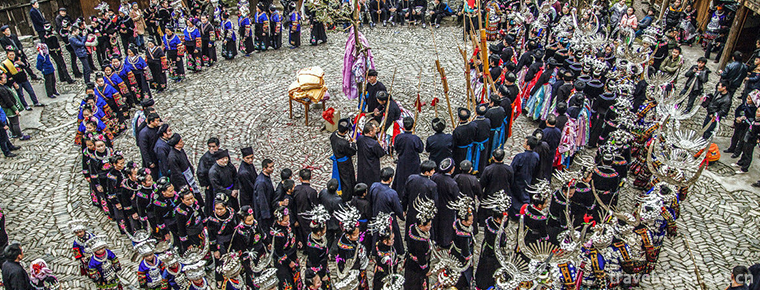
Miao Drum and Tibetan Festival
-
Beef noodle
Beef noodle is a common pasta. It is also a traditional food in Lanzhou
Views: 311 Time 2018-10-12 -
Cocotto Sea Scenic Area
The Cocotto Sea Scenic Area and Xinjiang Cocotto Sea National Geological Park, located in Fuyun County, Altay District, northern Xinjiang, covers an area of 788 square kilometers,
Views: 207 Time 2018-12-12 -
Linzhi Basongcuo Scenic Area
Basongtao, also known as Caogao Lake, means "green water" in Tibetan. It is about 18 kilometers long. Its surface area is about 27 square kilometers.
Views: 185 Time 2018-12-12 -
Tibetan calligraphy
Tibetan calligraphy is an important part of Tibetan culture and art. In the seventh century AD, during the Zampson Zangganbu period of Tubo, minister Tunmi Sampuza absorbed the advantages of different
Views: 174 Time 2019-04-05 -
Sing the news
Singing news is a traditional local opera popular in eastern Zhejiang, especially in Fenghua, Beilun, Zhenhai, Yinzhou and Xiangshan. Singing news has a long history, about a hundred years ago
Views: 223 Time 2019-04-16 -
April Eighth Girls Day of Miao Nationality
"Girl's Day" originated in memory of Yang Bamei, a heroine. Legend has it that in the Northern Song Dynasty, Yang Wenguang, a famous general, was ordered to be plain and barbarous. After def
Views: 215 Time 2019-06-05 -
Qinhuai Lantern Festival
Qinhuai Lantern Festival, also known as Jinling Lantern Festival and Confucius Temple Lantern Festival, is a popular folk cultural activity in Nanjing. It is mainly held from Spring Festival to Lanter
Views: 168 Time 2019-06-10 -
Uygur Folk Songs
Uygur folk songs are rich in content, which can be divided into two parts: traditional folk songs and new folk songs. Traditional folk songs include love songs, labor songs, historical songs, Life son
Views: 179 Time 2019-06-26 -
Inkstone making skills
Inkstone making skills, local traditional handmade inkstone making skills in Shexian County of Anhui Province and Wuyuan County of Jiangxi Province, is one of the national intangible cultural heritage
Views: 152 Time 2019-07-01 -
Yang Liu Qingmu New Year Print
Yangliuqing Wood Printing New Year Picture, Tianjin folk traditional art, one of the national intangible cultural heritage.
Views: 233 Time 2019-07-11 -
Beijing Institute Of Graphic Communication
Beijing Printing College is a full-time general higher education institution established by the Beijing Municipal People's Government and the former General Administration of Press and Publication. Th
Views: 187 Time 2019-09-22 -
Bengbu Medical College
Bengbu Medical College (Bengbu Medical College) is Anhui Province The provincial general higher medical colleges and the first batch of units granted the right to grant bachelor's and master's degrees
Views: 102 Time 2019-11-08
